Perot
Malting Elevator - Table of Contents .............. Grain Elevators - Table
of Contents
2013
color photos
Malthouse - Perot Malting Elevator
100 Childs Street in the First Ward in
Buffalo, NY
Part of Silo
City
| Built: |
1907 1933 additions |
| Original
owner: |
Perot Malting Co.
Dissolved in 1963. |
| 1984
owner: |
Genesee Brewing
Co. through its subsidiary Fred Koch Malting Company |
| Features: |
The second example of reinforced concrete elevator
construction in Buffalo. |
Exterior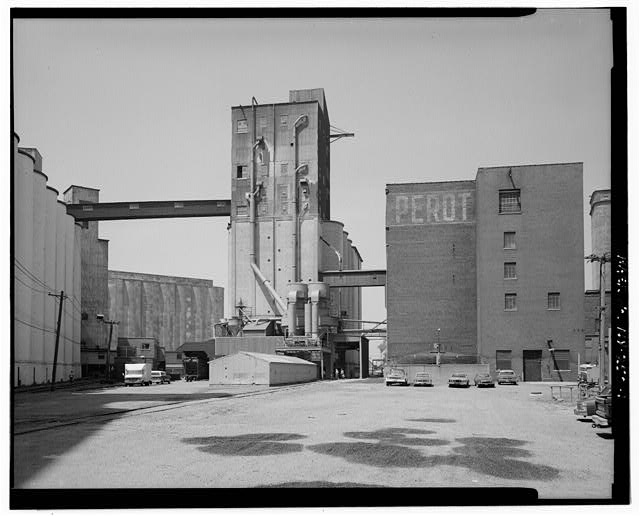 View looking north towards
Buffalo River.
Note overhead conveyor gallery at far left. Perot did not have marine legs
and so could not unload
ships. Beginning in 1922 when Russell-Miller bought the American
Elevator, grain needed by Perot for malting barley for beer was
horizontally conveyed from American to Perot on the overhead conveyor
gallery. Left: Perot workhouse and elevator ... Right: Perot malthouse. Photographer: Jet Lowe, 1994
found on HABS
(online March 2013)
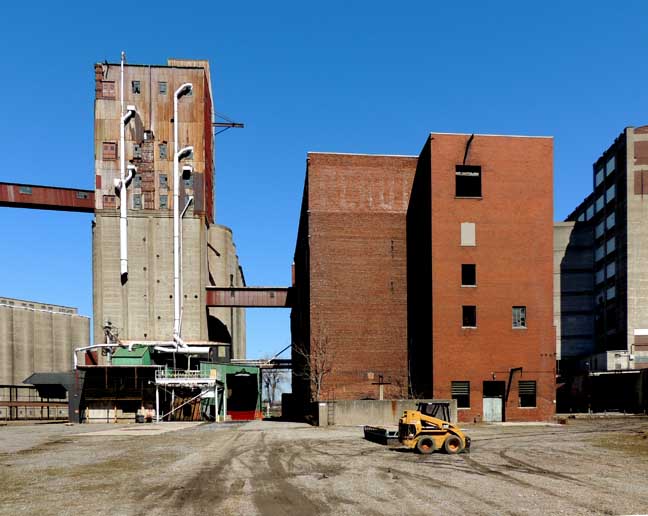 View looking north towards Buffalo River. Left: Perot workhouse and silos ... Right: Perot malthouse.  Perot malthouse. Note ghost writing: "Perot." At right, beyond the orange brick Perot malthouse is the Lake & Rail Elevator complex. 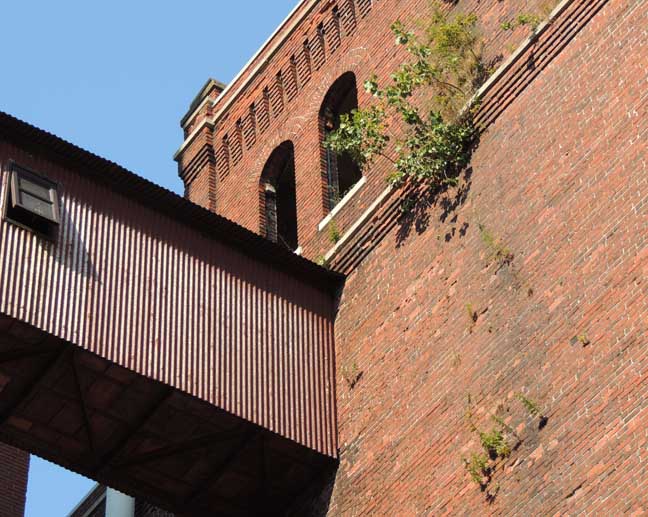 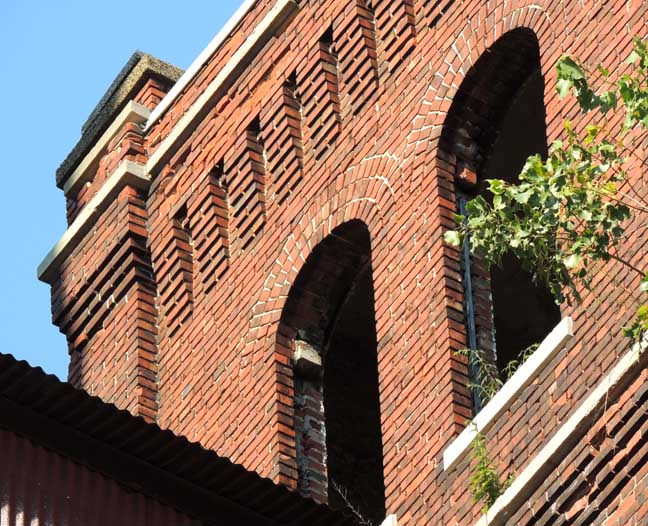 Corbel tables ... Voussoirs  Coal used to power kilns (later changed to natural gas). 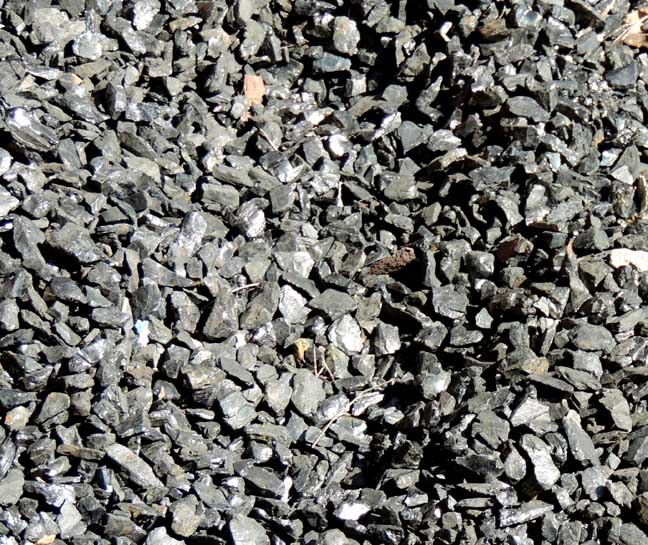 Coal |
Interior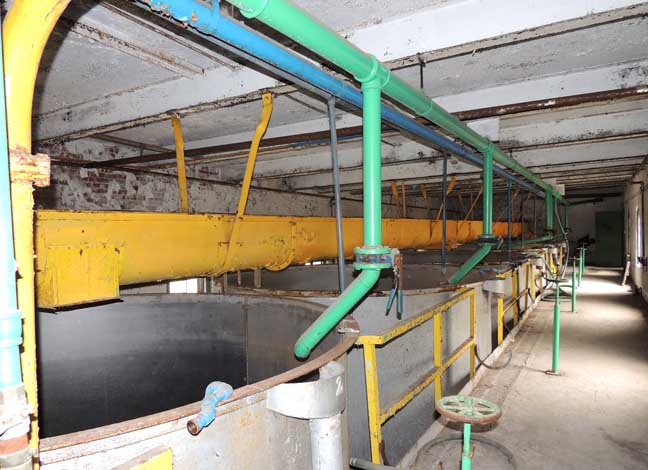 Steeping tanks 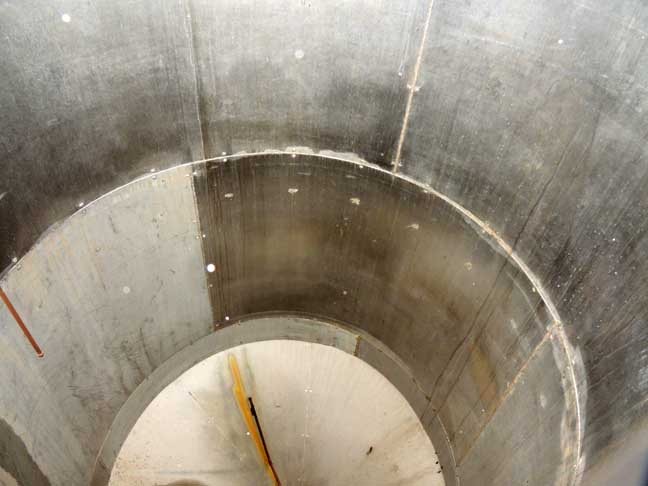 Steel steeping tank interior 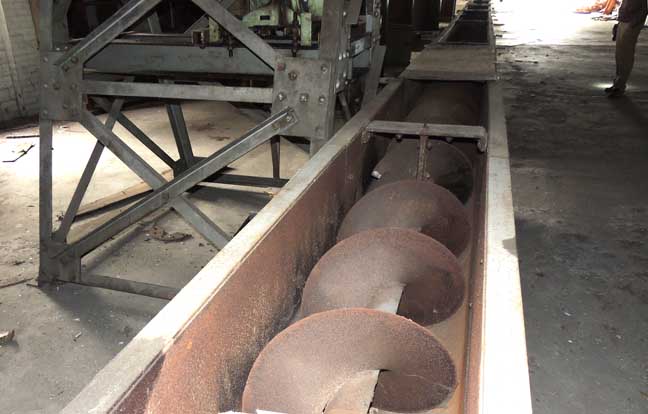 Screw conveyor 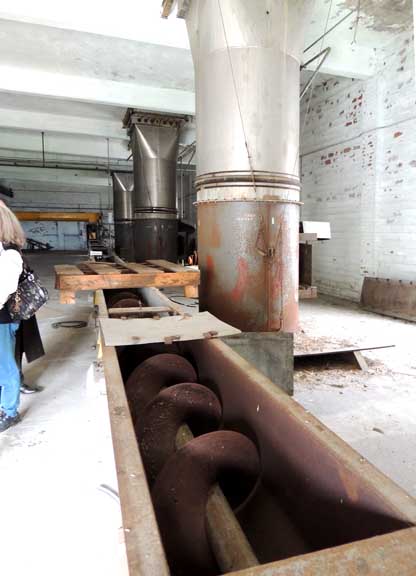 Screw conveyor ... Exhaust chutes. Germinated grain must next be dried. From holes in this conveyor, grain is dropped onto screens where heat from ovens/kilns below dried the grain, thus finishing the malting process. Malted grain would be transferred to silos awaiting distribution. 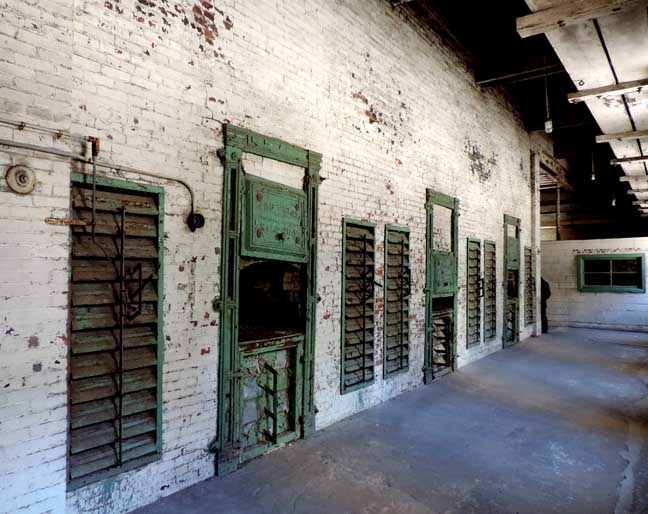 Kiln/ovens fueled by coal. After soaking and germinating, barley is roasted twice. Heat from these ovens would rise and roast the barley above.  Kiln/oven flanked by louvers for controlling temperatures 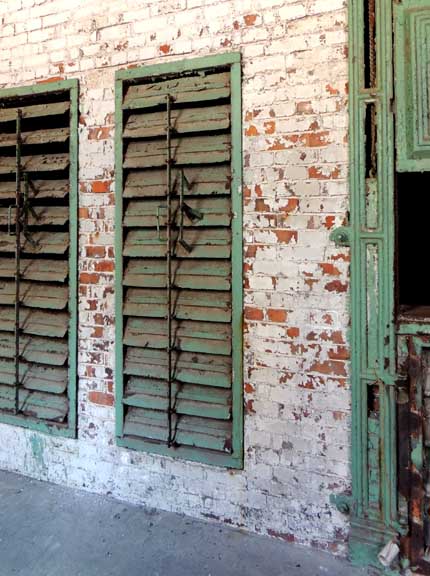 Louvers for controlling temperatures 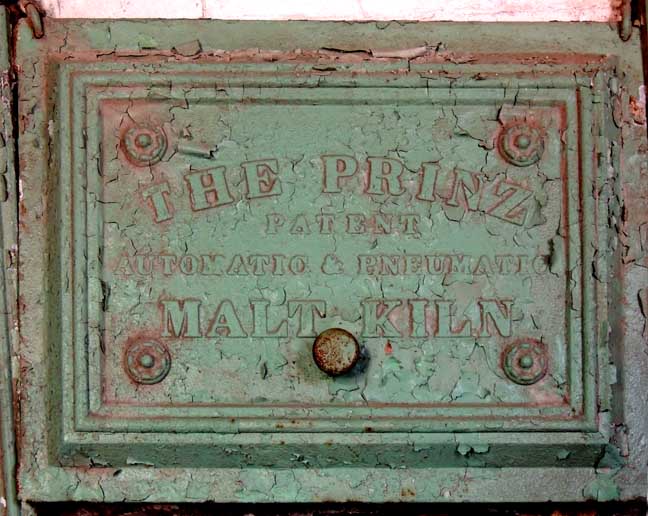 Printing: The Prinz / Patent / Automatic & Pneumatic / Malt Kiln 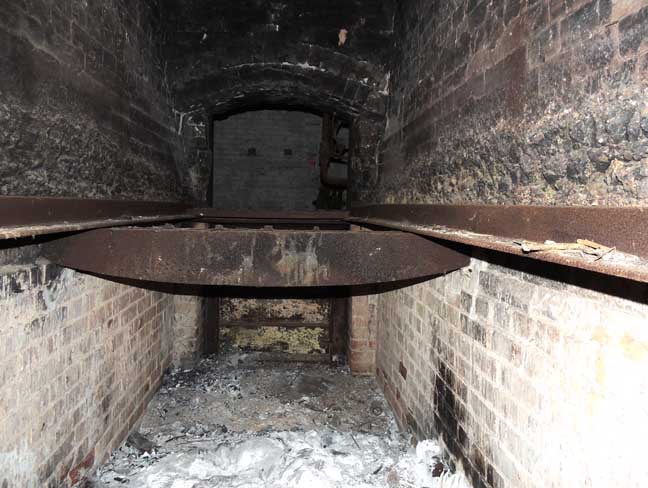 The interior of the kiln where coal was burned to roast the barley. Later natural gas was substituted for coal. 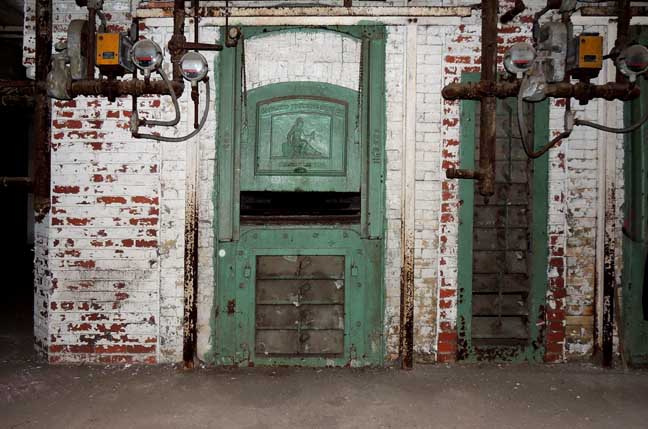 Other kiln 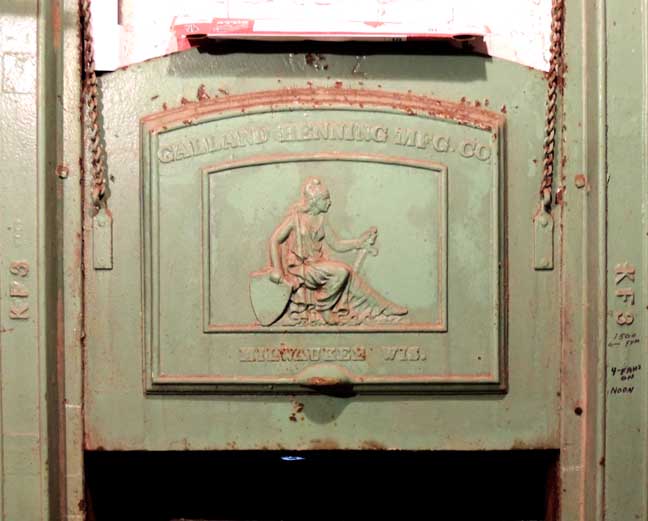 Galland Henning Mfg. Co. Milwaukee Wis. Ceres(?) the Roman goddess of the harvest, from whom we get the name"cereal." 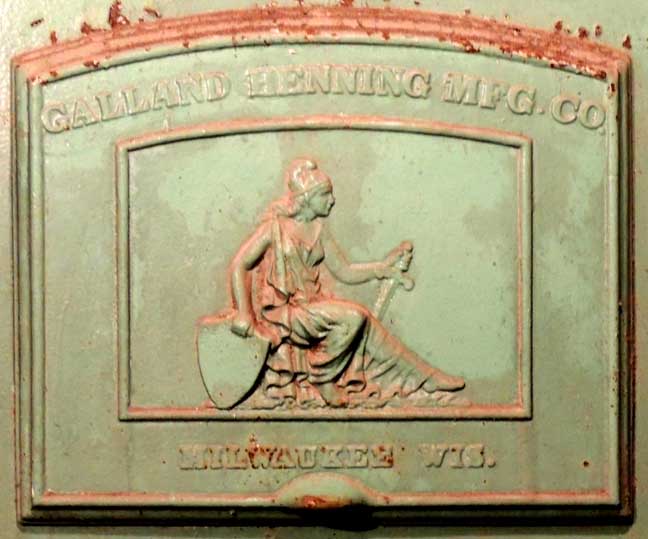 |
Boiler room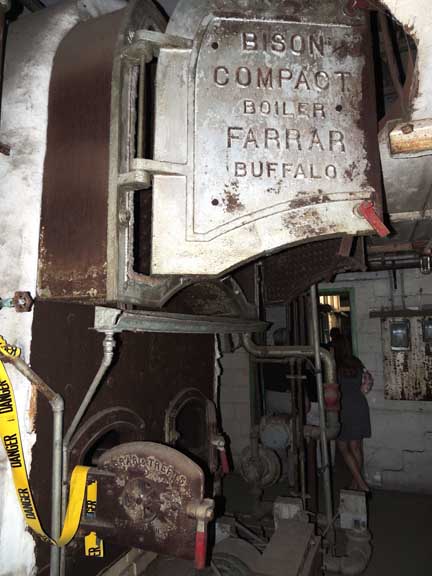 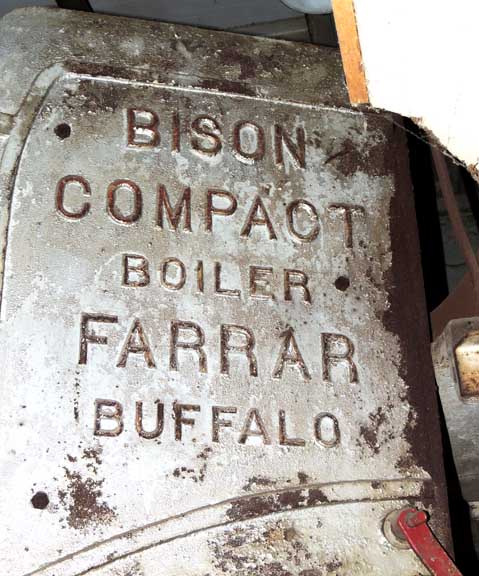 Cf., Chillion M. Farrar House and history 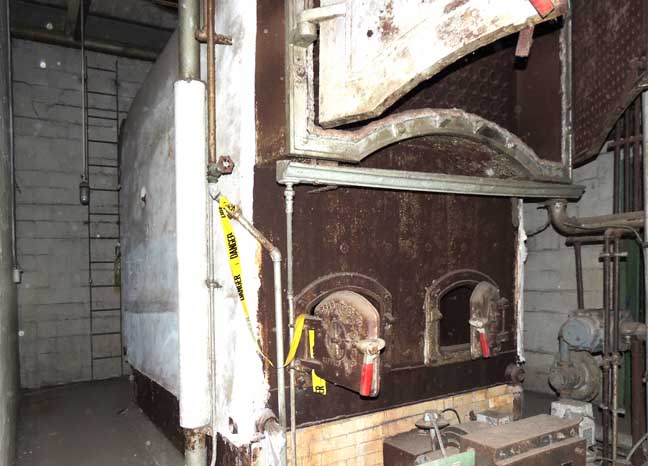 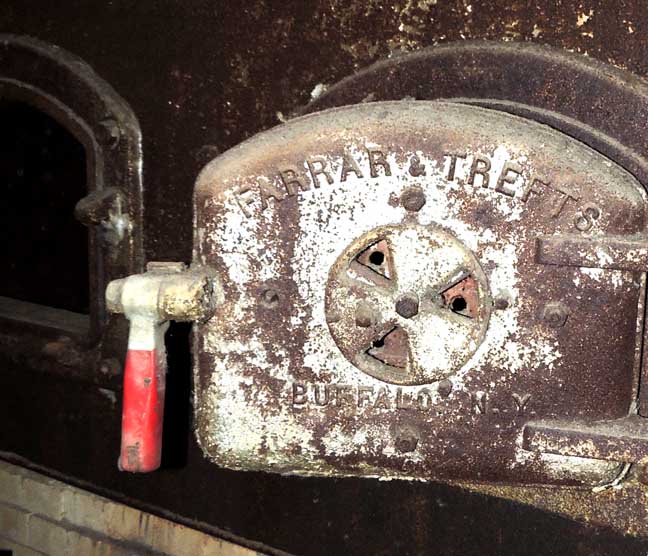 Cf., Chillion M. Farrar House and Farrar & Trefts history |
 Sign on Perot Malthouse.
Koch was the Genesee Brewing Co.
subsidiary in Buffalo. The barley
malted in Buffalo was transported to Rochester, the home of Genesee
Brewing.
|
|
Malted
Barley Production
Barley is shipped by railcar or truck to malting facilities. A screw conveyor or bucket elevator typically transports barley to storage silos or to the cleaning and sizing operations. The barley is cleaned and separated by size (using screens) and is then transferred to a malthouse where it is rinsed in steeping tanks (steeped) and is allowed to germinate. Following steeping and germination, “green” malt is dried, typically in an indirect-, natural gas-fired malt kiln [for example, in the Perot Malthouse kilns ]. Malt kilns typically include multiple levels, called beds or layers. For a two-level kiln, green malt, with a moisture content of about 45 percent, enters the upper deck of the kiln and is dried, over a 24-hour period, to between 15 and 20 percent. The barley is then transferred to the lower deck of the kiln, where it is dried to about 4 percent over a second 24-hour period. Some facilities burn sulfur in a sulfur stove and exhaust the stove into the kiln at selected times during the kiln cycle. The sulfur dioxide serves as a fungicide, bactericide, and preservative. Malted barley is then transferred by screw conveyor to a storage elevator until it is shipped. - EPA (online March 2013)
|
|
Conditioning
grain
Clean grain is achieved
through a variety of products such as screens, vibrators, scalpers and
aspirators. Grain passes over screens while different sized holes allow
unwanted pieces to fall through, leaving only the desired size or shape
grain behind. Also, grain is screened to remove oversized and foreign
materials. Elevator operators determine how much foreign matter, or dockage,
to remove based on specifications handed down from their customers or
the Federal Grain Inspection Service. These specifications depend on
the type of grain and its intended destination.
- Elise Schafer, Keeping
it Clean, 2008 (online March 2013)
Equipment for cleaning grain [removing all the materials other than the grain like sand, stones, straw, weeds, etc.] and clipping oats was situated in the cylindrical bins flanking the workhouse. Grain from the cleaning receiving bins was eventually spouted to the house lofters for reelevation to storage or weighing out. - HABS, pp. 19-20 (online March 2013 |
